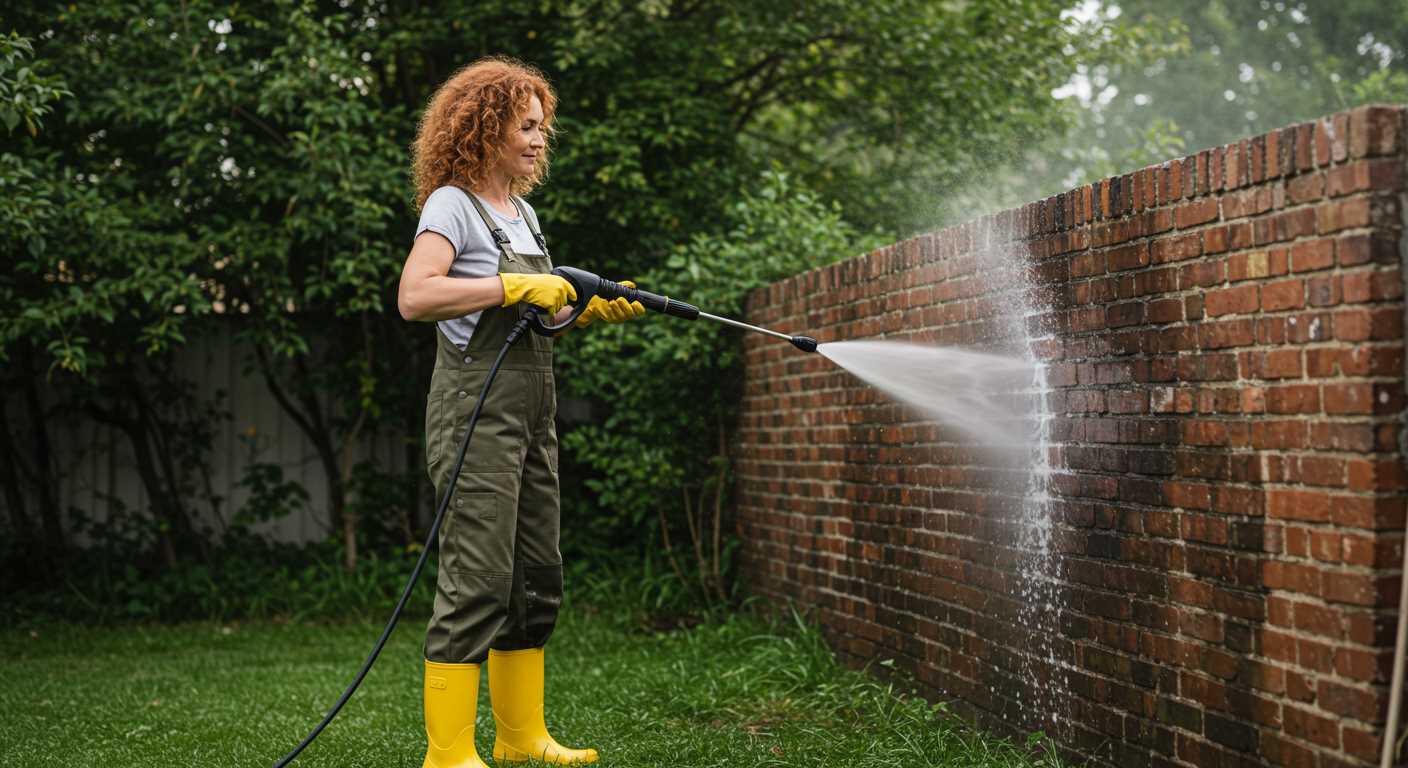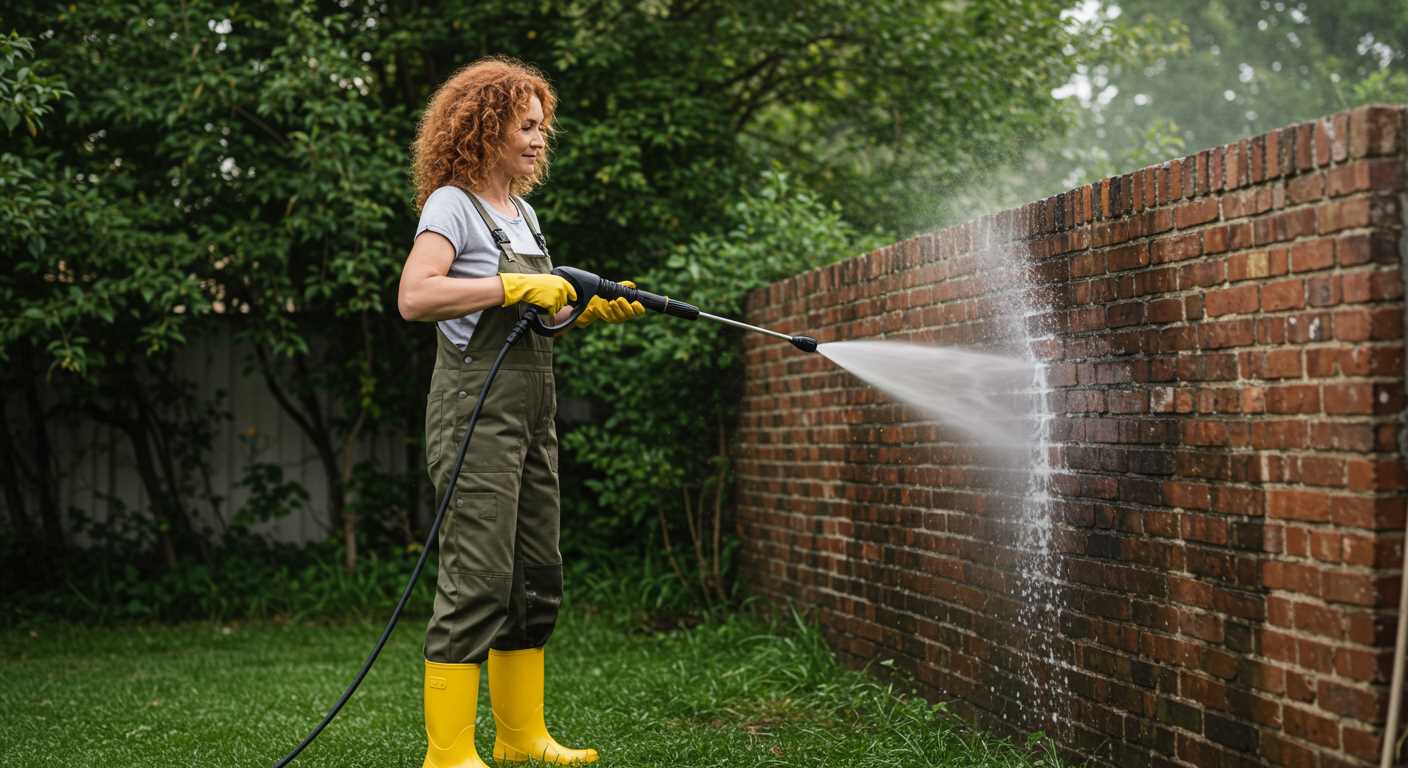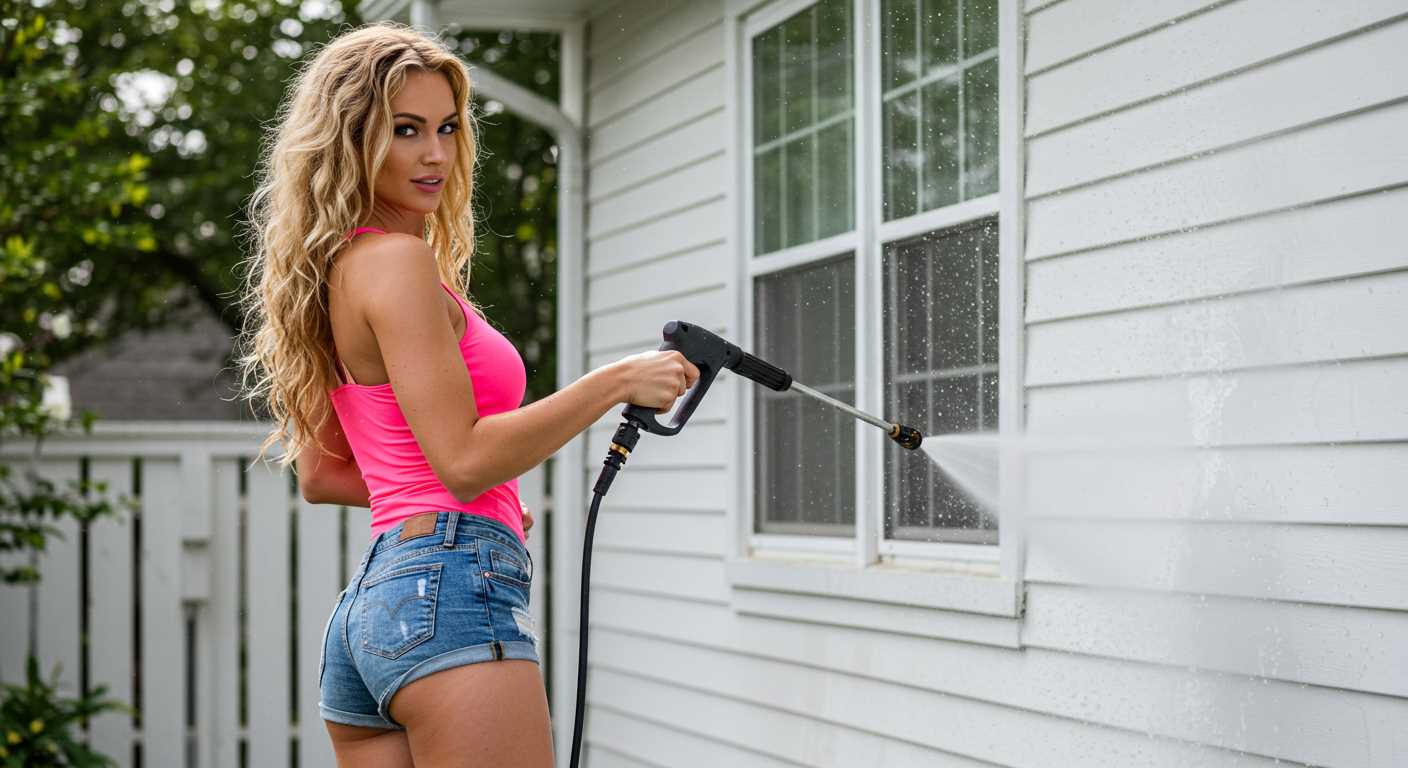




If you’re looking to refresh your outdoor surfaces, you don’t need advanced machinery to achieve great results. I often recommend a simple combination of manual techniques and basic tools that can effectively revive your pathways. With the right approach, you can save both time and money while ensuring your space looks its best.
Start with a thorough sweep to remove loose debris and dirt. A sturdy broom or a stiff-bristled brush works wonders for this task. After clearing the area, consider using a mixture of warm water and a mild detergent. A bucket and sponge can be your best friends here. I recall a particularly stubborn stain on my own patio that required a bit of elbow grease, but it was satisfying to see it lift away with just a bit of scrubbing.
For those tough spots, a dedicated scrub brush or a small handheld scraper can help dislodge any built-up grime. I once faced a similar challenge with some algae growth, and by applying a vinegar solution, I found it was both safe and effective. Remember to rinse thoroughly after treatment to prevent any residue from remaining behind.
Lastly, don’t underestimate the power of regular maintenance. A periodic check-up can help you spot issues before they escalate, allowing you to keep your outdoor areas looking pristine year-round. I learned that a little proactive care makes all the difference in reducing heavy cleaning sessions later on.
Alternative Methods for Surface Maintenance
Using a high-pressure apparatus isn’t the only route for tidying up your outdoor surfaces. In fact, I’ve discovered several methods that yield excellent results without the need for such machinery. Here are some of my top recommendations:
1. Manual Scrubbing
Engaging in a hands-on approach can be surprisingly effective. Here’s how to tackle it:
- Gather Supplies: You’ll need a sturdy broom, a stiff-bristle brush, and a suitable cleaning solution–vinegar or baking soda works wonders.
- Preparation: Start by sweeping away loose debris and dirt. This helps to prevent scratching the surface while scrubbing.
- Application: Mix your cleaning solution with water and apply it generously. Let it sit for a few minutes to break down grime.
- Scrub: Use the stiff-bristle brush to scrub the surface, focusing on stained or heavily soiled areas.
- Rinse: Finish off with a good rinse using a bucket of clean water or a hose.
2. Eco-Friendly Options
For those keen on sustainability, several natural alternatives can help keep surfaces looking fresh:
- Vinegar Solution: Combine equal parts vinegar and water to create a powerful cleaning agent. It’s particularly effective against moss and algae.
- Baking Soda Paste: Mix baking soda with water to form a paste. Apply it directly to stubborn stains and let it sit for 15-20 minutes before scrubbing.
- Salt and Lemon: A mixture of salt and lemon juice can tackle spots and stains while also leaving a pleasant scent.
These methods are not only budget-friendly but also gentle on the environment. From my experience, they can be just as effective as using high-powered equipment, provided you invest a bit of time and effort. Give them a try and see the difference for yourself!
Choosing the Right Cleaning Solution for Paving
For optimal results, select a cleaner tailored to the type of surface and the nature of the stains. I remember the first time I tackled a particularly stubborn oil stain on a driveway; it was a challenge that required the right product. After some trial and error, I found that a degreaser specifically formulated for outdoor surfaces worked wonders.
Consider the following types of solutions based on your needs:
| Type of Stain | Recommended Solution | Usage Tips |
|---|---|---|
| Oil and Grease | Heavy-duty degreaser | Apply directly, allow to sit, scrub with a stiff brush. |
| Moss and Algae | Algae remover or bleach solution | Mix with water, spray on affected areas, rinse thoroughly. |
| General Dirt | All-purpose cleaner | Mix with water, mop or scrub, then rinse. |
| Stains from Vegetation | Vinegar solution | Spray on stains, let sit for 15 minutes, scrub and rinse. |
Always follow the manufacturer’s instructions for dilution and application. For best results, ensure the surface is dry before application. You might also want to explore options like the best car wash liquid for pressure washer for specific conditions.
Testing a small area first can prevent any unexpected reactions and help you gauge the effectiveness of your chosen solution. Remember, the right cleaner can significantly reduce the amount of physical effort required, making the entire process more straightforward.
Steps to Manually Remove Stains from Paving
First, gather your supplies: a stiff-bristled brush, bucket, sponge, and a suitable stain remover. For oil or grease stains, a dish soap mixed with hot water works wonders. For organic stains, a solution of vinegar and water can be effective.
Next, apply the cleaning solution directly onto the stained area. Allow it to sit for about 10-15 minutes. This will help to break down the stain, making it easier to remove.
While waiting, use the brush to scrub the surface surrounding the stain. This prevents dirt from being pushed into the porous material of the surface. After the waiting period, take the stiff brush and scrub the stained area vigorously. Use circular motions to lift the stain. For stubborn spots, a bit more elbow grease may be required.
Once you see progress, use a sponge to soak up the excess cleaning solution. Rinse the area with clean water, either from a bucket or using a hose, ensuring no residue is left behind. If you notice any remaining stains, repeat the process until satisfied.
For persistent mould or mildew issues, consider using a mold and mildew remover for pressure washer. These products can assist in tackling tougher stains that regular methods might struggle with.
Finally, allow the surface to dry completely. Regular maintenance can help prevent the build-up of stains, keeping your outdoor areas looking their best.
Tools You Need for Cleaning Paving Without Pressure
.jpg)
For tackling grime buildup on hard surfaces, having the right equipment is key. A sturdy broom is your best friend; it helps to remove loose debris and dirt before you start any scrubbing. Look for a broom with stiff bristles for effective sweeping. A dustpan will come in handy for collecting the debris you’ve swept up.
Scrubbing Brushes and Sponges
A long-handled scrubbing brush allows you to apply elbow grease without straining your back. Choose one with durable bristles that can withstand tough stains. For smaller areas or intricate designs, a sponge will be useful–pick a heavy-duty one to ensure it holds up against tougher marks.
Cleaning Solutions and Accessories
Opt for a suitable cleaning solution based on the type of surface you’re dealing with. A bucket is necessary for mixing your cleaning solution. A garden sprayer or spray bottle can help distribute the cleaner evenly across the surface. Don’t forget to wear protective gloves to safeguard your hands from harsh chemicals. A hose with a spray nozzle will assist in rinsing off the area once you’ve finished scrubbing.
By equipping yourself with these tools, you’ll find that maintaining the appearance of your outdoor surfaces can be quite straightforward, and it can save you from needing more intensive methods later on.
How to Maintain Paving After Cleaning
To ensure longevity and aesthetic appeal, regular upkeep is essential after tackling dirt and stains from your surfaces. Start by applying a sealant specifically designed for your type of material; this creates a barrier against future grime and moisture penetration.
Routine Inspection
After your initial restoration, conduct routine checks every few months. Look for cracks or signs of wear. Addressing small issues before they escalate will save time and resources in the long run. If you spot any weeds or moss, remove them promptly to prevent root systems from causing further damage.
Regular Maintenance Practices
Adopt a simple sweeping regimen to keep debris at bay. A soft-bristle broom works wonders, while a leaf blower can assist in removing stubborn leaves or dirt. For stubborn spots, mix warm water with a mild detergent and scrub with a stiff brush. Rinse with clean water after scrubbing to prevent residue build-up. Additionally, consider a light application of the chosen sealant every couple of years to refresh the protective layer.
Alternative Methods for Deep Cleaning Paving
One of the most effective alternatives I’ve discovered involves using a solution of vinegar and baking soda. Combine these two ingredients to create a fizzing reaction that helps lift grime. Apply it directly to the stained areas, let it sit for about 15 minutes, and then scrub with a stiff-bristled brush. This method not only tackles tough stains but also deodorises the surface.
Another technique is using a mixture of dish soap and hot water. This simple concoction can work wonders, particularly for oil or grease stains. Pour the soapy water over the affected area, allow it to penetrate for a few minutes, then scrub thoroughly. Rinse with clean water to reveal a refreshed appearance.
For those dealing with moss or algae, a solution of water and bleach is highly effective. Mix one part bleach with ten parts water and apply it to the affected spots. After about 30 minutes, scrub the area and rinse thoroughly. This method not only removes the unwanted growth but also helps prevent its return.
Lastly, consider using a manual scrubbing approach with a rotary floor brush. I’ve used these brushes on uneven surfaces to achieve a deep clean. Attach it to a standard drill, apply your preferred cleaning solution, and let the brush do the work. This method is particularly beneficial for textured surfaces where dirt tends to accumulate in crevices.
Common Mistakes to Avoid When Cleaning Paving
Focusing on the wrong products can lead to ineffective results. Not all detergents are suitable for stone surfaces; some can cause damage. Always check compatibility before application.
- Using Harsh Chemicals: Avoid bleach or ammonia-based solutions. They can discolour or deteriorate the material.
- Ignoring Instructions: Each cleaning solution has specific usage guidelines. Not following them can result in poor performance or damage.
- Over-scrubbing: Excessive scrubbing can scratch surfaces, especially softer stones. Use a gentle approach with appropriate brushes.
Timing is also critical. On sunny days, solutions may dry too quickly, preventing effective stain removal. Opt for cooler, overcast conditions for better results.
- Neglecting Rinsing: Residual cleaning agents can lead to a sticky surface. Always rinse thoroughly to avoid build-up.
- Forgetting to Test: Always perform a spot test in an inconspicuous area. This helps identify any adverse reactions before full application.
Lastly, don’t skip regular maintenance. It’s easier to manage small stains than to tackle extensive build-up later on. Keeping a routine will save time and effort in the long run.






.jpg)


